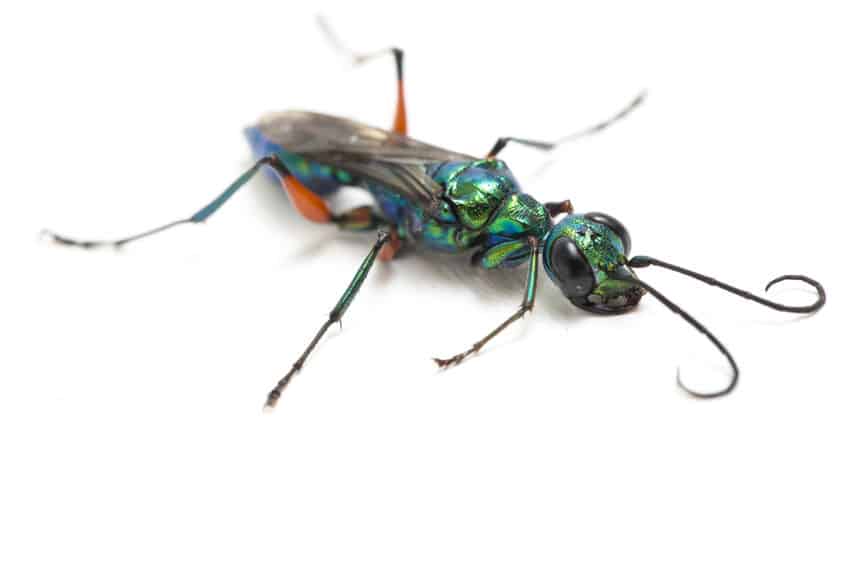Wasps are often very unpopular due to their stings, but cockroaches are not a welcome sight in and around our homes either. But you may have wondered if wasps eat them.
Cockroach wasp larvae eat cockroaches. Parasitoid cockroach wasps target cockroaches as hosts for their larvae. The wasp paralyzes the cockroaches before laying an egg next to them in a nest. The larvae then burrow into the cockroaches and feed on them, eventually killing the cockroach.
let’s look at some examples of these cockroach wasps. They are found worldwide, including North America and Europe.
The dementor wasp
The ampulex-dementor wasp, a type of cockroach wasp, preys on cockroaches. It gets its name from the way it takes control of the cockroach before leading it to be the live food for its larvae. The wasp will sting a cockroach in the chest, temporarily, paralyzing it. But it doesn’t end there as the wasp will then sting the cockroach in the head. The impact of this sting is to block the cockroach’s nerves that enable it to control movement. As a result, the cockroach can still move, but it can not send the signals to its own legs to move. The wasp is now free to walk the cockroach by its antennae to its nest. Cockroach wasps similar to this can be found all over the world.

Once at the nest the wasp will lay an egg on the cockroach before leaving her young to their own devices. This method of only partially paralyzing the cockroach means that they can provide much larger specimens for their larva to feed on as they would be too heavy to carry if totally paralyzed. The wasp larvae now have plenty of nutrition as they feed on the cockroach from the inside out.
Emerald cockroach wasp
Also known as the jewel wasp they also prey on cockroaches to use as hosts for their larvae. They can also paralyze and control cockroaches in the same fashion as the dementor wasp. They are mostly found in tropical regions of Africa and Asia. They are noticeable because of their metallic blue-green coloration.

Their effective hunting technique allows them to prey on cockroaches far larger than themselves. The hatched larvae feed on the cockroach for 3-4 days before entering the roach to consume it from the inside out.
The wasps must sting the cockroaches twice. The first sting only creates temporary paralysis of about 2 minutes, long enough to give the wasp the time it needs to deliver the second sting. This is because the wasp actually is very careful to inflict the second sting in the exact location of the roach’s subesophageal ganglion. It is this which prevents the cockroach from walking of its own will.
Like all parasitoid wasps, the aim is to keep the host for their larvae alive for as long as possible to maintain nutrients for the wasp larvae for as long as possible.
